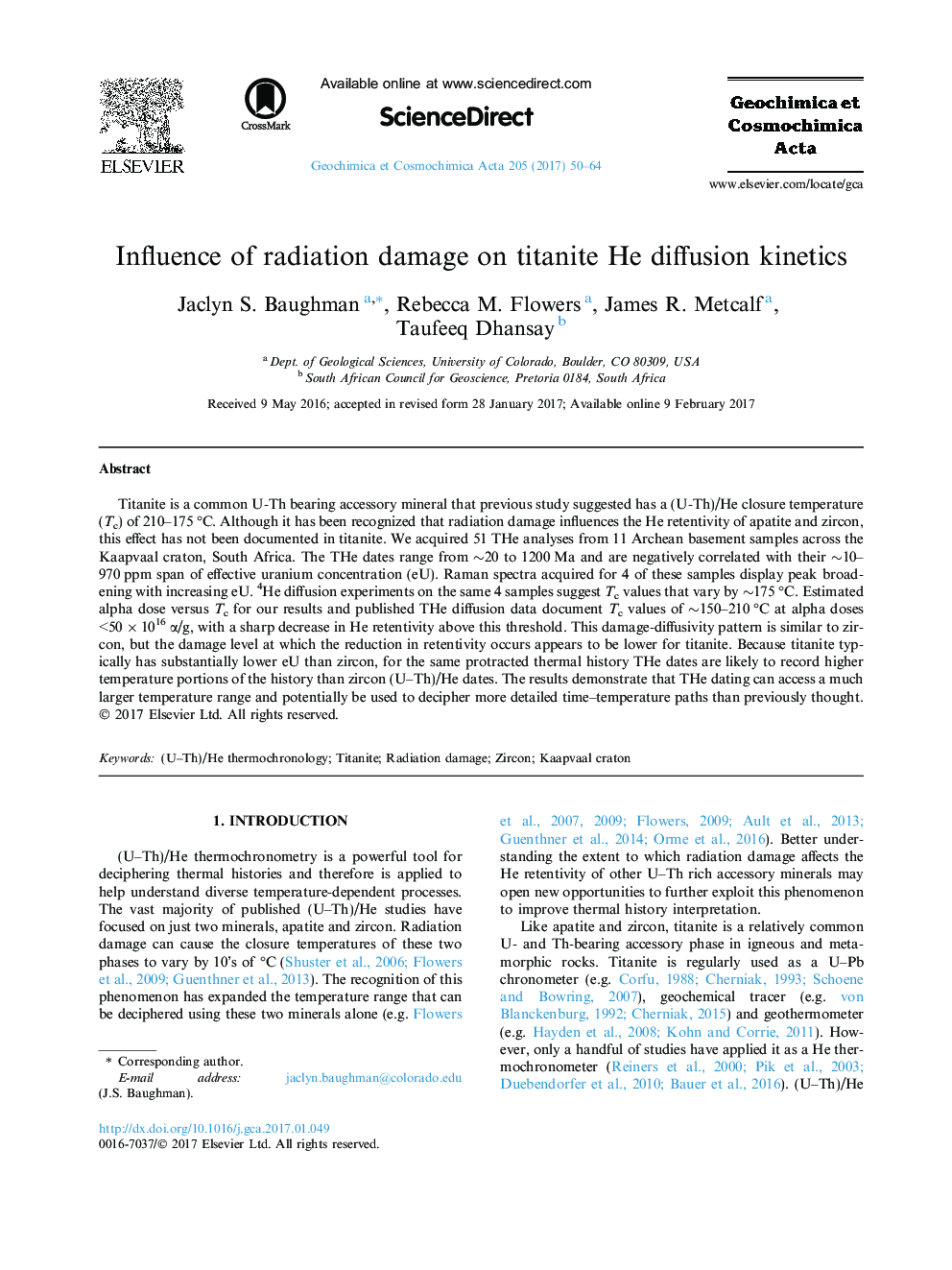| Article ID | Journal | Published Year | Pages | File Type |
|---|---|---|---|---|
| 5783209 | Geochimica et Cosmochimica Acta | 2017 | 15 Pages |
Abstract
Titanite is a common U-Th bearing accessory mineral that previous study suggested has a (U-Th)/He closure temperature (Tc) of 210-175 °C. Although it has been recognized that radiation damage influences the He retentivity of apatite and zircon, this effect has not been documented in titanite. We acquired 51 THe analyses from 11 Archean basement samples across the Kaapvaal craton, South Africa. The THe dates range from â¼20 to 1200 Ma and are negatively correlated with their â¼10-970 ppm span of effective uranium concentration (eU). Raman spectra acquired for 4 of these samples display peak broadening with increasing eU. 4He diffusion experiments on the same 4 samples suggest Tc values that vary by â¼175 °C. Estimated alpha dose versus Tc for our results and published THe diffusion data document Tc values of â¼150-210 °C at alpha doses <50 Ã 1016 α/g, with a sharp decrease in He retentivity above this threshold. This damage-diffusivity pattern is similar to zircon, but the damage level at which the reduction in retentivity occurs appears to be lower for titanite. Because titanite typically has substantially lower eU than zircon, for the same protracted thermal history THe dates are likely to record higher temperature portions of the history than zircon (U-Th)/He dates. The results demonstrate that THe dating can access a much larger temperature range and potentially be used to decipher more detailed time-temperature paths than previously thought.
Related Topics
Physical Sciences and Engineering
Earth and Planetary Sciences
Geochemistry and Petrology
Authors
Jaclyn S. Baughman, Rebecca M. Flowers, James R. Metcalf, Taufeeq Dhansay,
